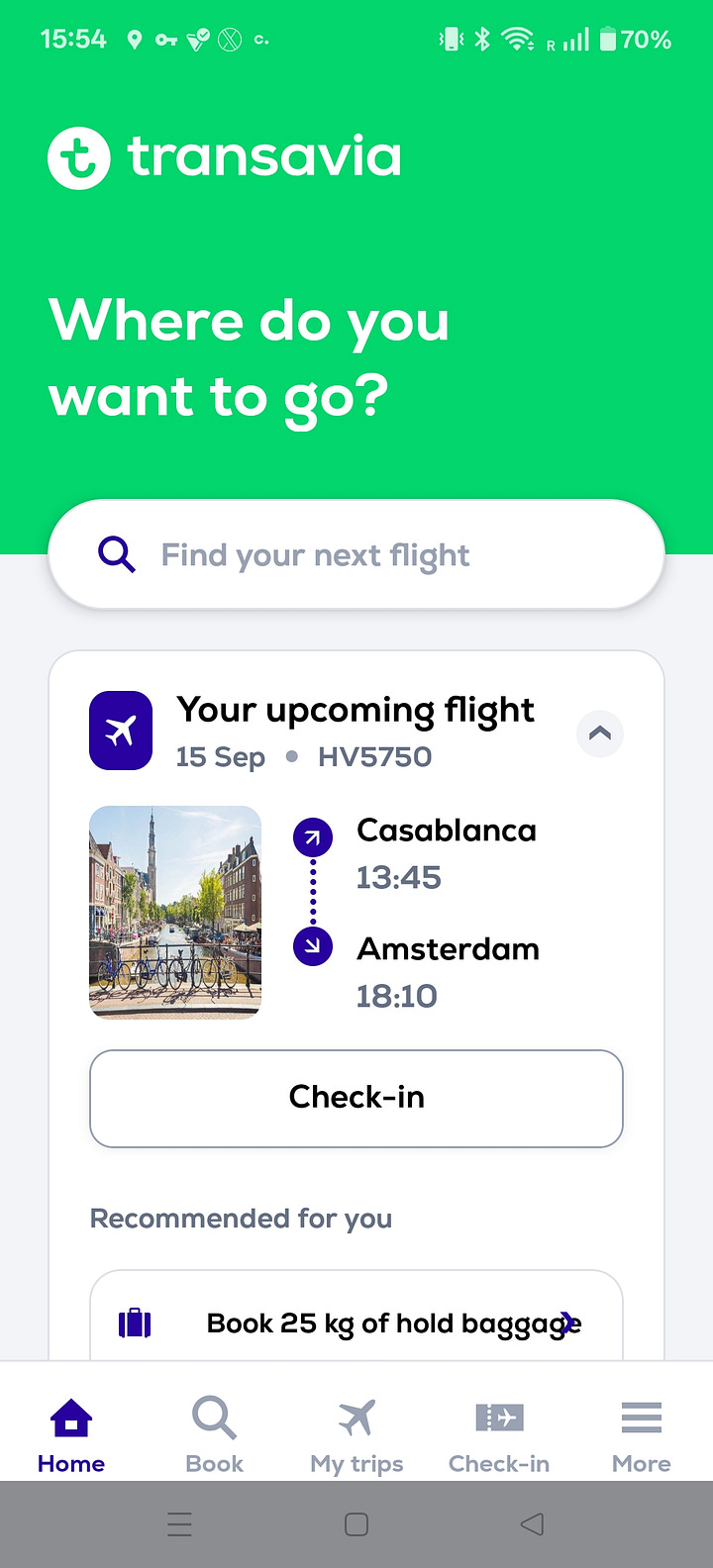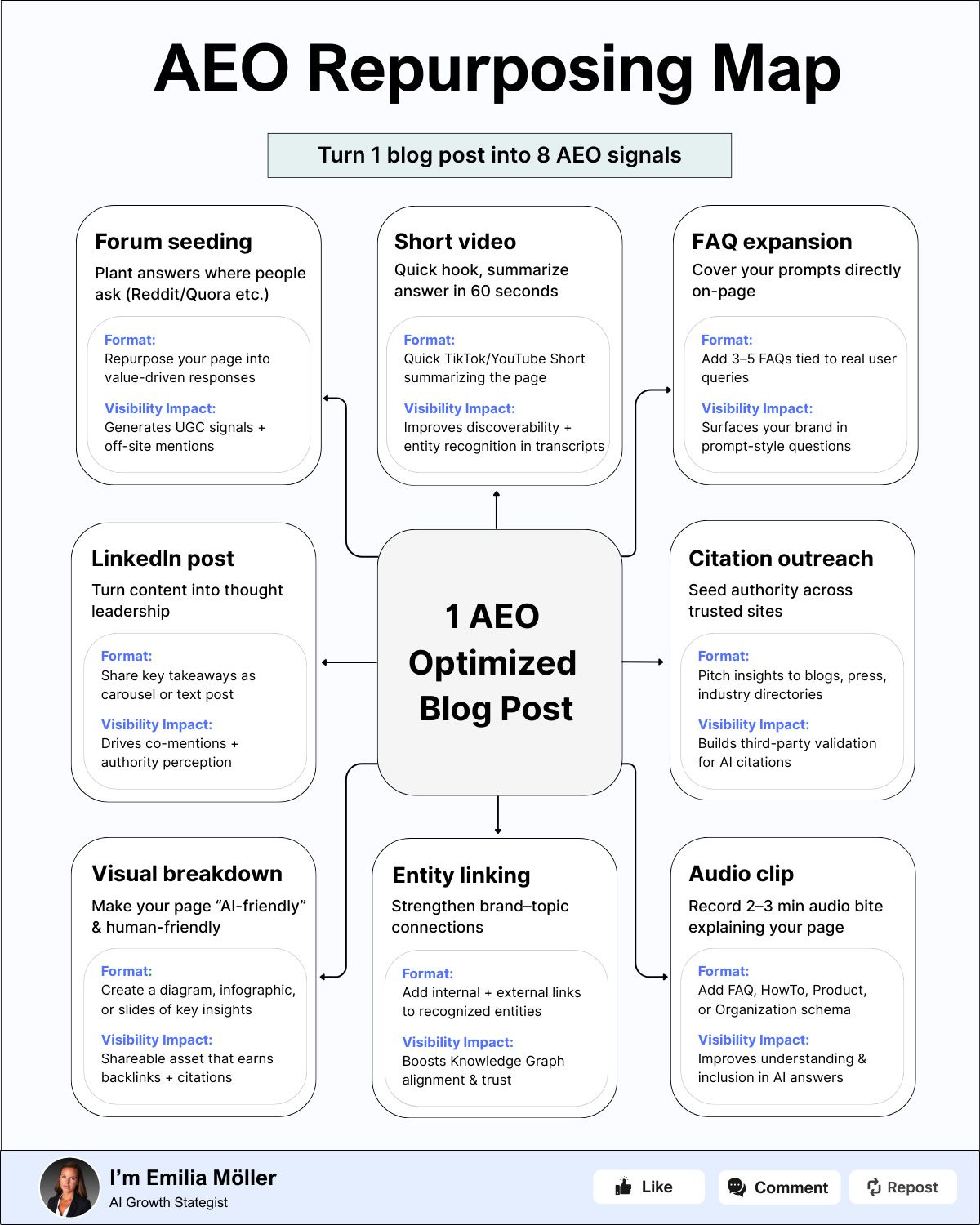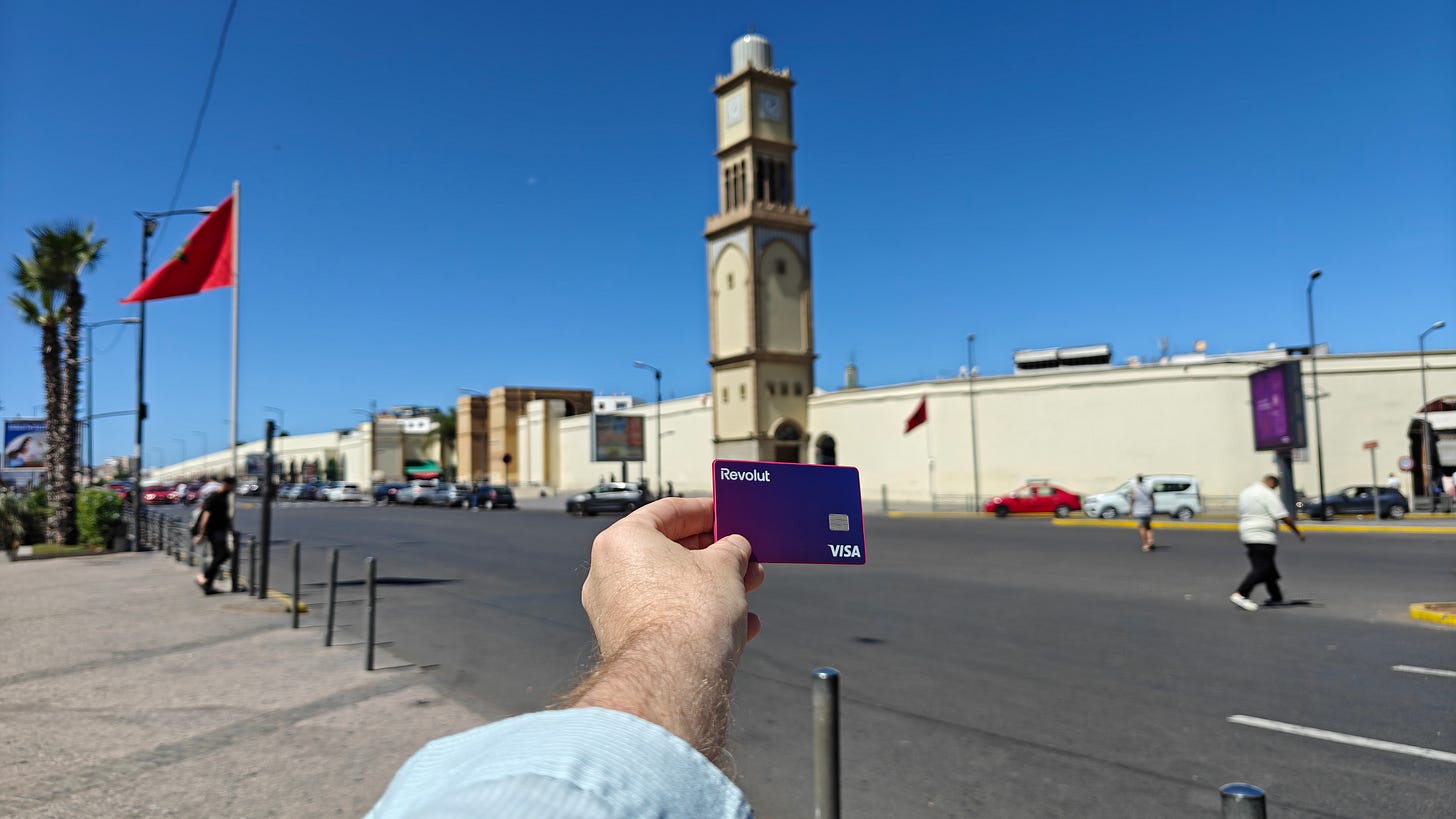Global Digital Marketing & Retail by Alex 108
Inspiration from across the world for retail enthusiasts, e-commerce professionals, marketing lovers and technology fans. Welcome back! I summarized some great links again, I stumbled upon this week.
🔍 AEO repurposing map from Emilia Möller
Yes, Yes, Yes! Thank you Emilia for these nice overview! I wrote on content repurposing content in an earlier edition:⬇️
This overview from Emilia only confirms, that is the right direction. As she writes it:
Every blog post you create can be repurposed into (at least) 8 separate AEO signals.
Each one improving how LLMs discover, cite, and trust your brand.
A visual → backlinks
An FAQ → prompt coverage
A forum answer → user signals
A short video → transcript visibility
An entity link → Knowledge Graph trust
An audio clip → schema-backed inclusion
A LinkedIn post → authority & co-mentions
So use this in your content strategy! And remember, repurposing is not just “copying”!
💳 Revolut vs Irish legacy banks
I am a happy user and big fan of “revolut”. Why? Because of their high pace of innovation and customer centricity. There is always something new to discover in the Revolut app and I hate legacy banks, that might also help.😅. Revolut does a real good job in keeping you busy in the app (just like Temu, but more on that below)😉
If you are like me then you also like to read articles on these topics, I linked below an article, on Irish banks who try to strike back at Revolut (haha). Of course too little too late.
The worry for the likes of AIB and Bank of Ireland is that, for these young customers, Revolut would become their primary lender.
This is what has likely pushed the banks to launch Zippay now, it’s an attempt to win back some of the ground ceded to their digital rivals.
Customers are notoriously slow to switch banks. The traditional lenders are desperate to stop Revolut from winning over the next generation of customers.
The explanation is of course that Revolut and its peers are creatures of the digital age and were designed to take advantage of the opportunities afforded by smartphone technology to offer a much better banking experience. They are banks built around their users which is about as far away from the traditional Irish approach to banking as you can get. Remember that banks here only started opening at lunchtime in the late 1990s and only then after the Australian owned National Irish Bank broke the mould.
Details:
https://www.thejournal.ie/revolut-irish-competitors-why-so-long-6815556-Sep2025/
https://www.irishtimes.com/business/2025/09/10/irish-banks-in-a-deathmatch-with-revolut/
An earlier post about Revolut’s growth techniques that you might find interesting:
https://www.crossborderalex.com/p/global-digital-marketing-and-retail-ed65
🪝Hooked: How Chinese companies hook western consumers in apps
Chinese companies and websites/apps. I got used to it, got to like them! My plan is even to make a special newsletter on the features of those apps. Turns out, I am not the only one who got hooked.😅
We more and more see expansion of the Chinese UX and digital commerce to other parts of the world. Business Insider and MSN wrote an article on it which is very interesting for us e-commerce and marketing professionals:
That got me, a onetime Labubu cynic, thinking about how Chinese companies have slowly but surely mastered the art of conquering markets.
Allison Malmsten, a public research director at Daxue Consulting, a China-focused strategy consultancy, said China has always been known as the factory of the world. We've been buying Chinese products all along.
"The difference is now that they've figured out that not only can they sell the products overseas, but they can also sell the brand,"
Chinese companies rely on dopamine-inducing, in-your-face marketing much more than their Western counterparts.
E-commerce apps like Temu and Taobao have busy interfaces with numerous pop-ups. The constant pop-ups and flashy ads screaming the latest discounts encourage customers to buy into a scrolling loop. And with more scrolling comes more spending.
Malmsten from Daxue Consulting said global players like Amazon focus on making their platforms seamless and easy to use.
But Chinese e-commerce platforms are geared to making the shopping experience entertaining.
https://www.msn.com/en-ca/money/companies/chinese-companies-cracked-the-code-on-getting-people-at-home-hooked-now-they-re-exporting-that-playbook-globally/ar-AA1MC9SX
https://www.businessinsider.com/chinese-companies-cracked-code-on-getting-people-hooked-2025-9
Temu transparancy report: 115.7 million users in the EU:
https://dl.kwcdn.com/upload-common/common/Temu-DSA-Transparency-Report-Qualitative-Report_8.25.pdf
🇮🇪 Ryanair & skyscanner prepare for AI agents


As I wrote last week, marketplaces might be getting a tough time if they do not adjust to AI agents. More or less the same can (and will) happen to comparison websites.
Skyscanner now turned to their former “enemy” Ryanair to get a partnership.
Speaking to the media after the AGM, O’Leary said: “They all recognise that AI is going to come along and eat their business models. Nobody is going to be scrolling on comparison websites.
AI is the reason why they have come to the table,” he revealed, noting consumers in coming years will just “ask Alexa”.
However, the fast-talking airline chief recognises that AI could be a double-edged sword. “I worry that whoever wins in AI – say Google or ChatGPT, if they start selling 60 per cent our seats... they’ll turn around and try and charge us for distribution.
I think it’s very interesting to follow and a smart move from skyscanner. They can survive i.m.o. by plugging in directly in as many airlines as possible and then offer these API’s to LLM’s.
So they can shift from only being a consumer facing site to also offering technical connections (API’s) to agents. They can be the trusted connection to LLM’s. They might even connect and optimize your airline loyalty programmes or even book a full custom made holiday!
There are more strategic options of course, but this seems a valid direction.
🧐Diary of a CEO: Ray Dalio: radical transparency and effective teams
I have been listening to a podcast with Ray Dalio. From this podcast that lasted more then an hour I clipped this part as it might be relevant to the readers of this substack. It’s on management and building effective teams, I think this is very much valid for e-commerce teams as well.
A few highlight but watch the snippet or the full pod (linked below)
The core idea is to achieve more by leveraging others, rather than simply working harder oneself. This involves picking the right people who are capable and trustworthy, ensuring they operate in the organisation's best interest.
Dalio mentions that when he was most active, he had 30 direct reports and would typically have an hour-long meeting with them once every two weeks, allowing them to go off and execute tasks. This approach enables finding people who are better at certain tasks than the leader, thereby expanding capacity.
Dalio highlights the importance of meaningful work and meaningful relationships, fostered through radical truthfulness and radical transparency. To enforce truthfulness, Dalio implemented a strict policy: if someone was caught talking critically behind another person's back three times, they would be dismissed.
He established radical transparency where everyone could see everything, including the rationale behind decisions.
To support honest communication and a strong team bond, Dalio actively promoted meaningful relationships. He encouraged the creation of employee clubs for various activities (e.g., softball, chess, going to ball games), offering to pay for half of the costs up to $500 per half for clubs with more than 20 people. This fostered connections beyond work, enabling people to talk honestly with each other.
Dalio built an "idea meritocracy," where the best idea wins, regardless of who proposed it, rather than simply adopting the ideas of the most powerful person in the business
Full podcast on YouTube here.
🇳🇱 Transavia: passenger experience improvement suggestions




I flew with Transavia to Morocco. Now Transavia is a larger company, but still I saw a few glitches in their customer experience.
I got delayed on the way back. Perfect moment for a push notification and an in-app message (preferably in combination with an e-mail). But they only send an SMS(!). That I do not understand and also did not receive at that time while I was waiting at the airport. Reason is simple: more and more people use e-sims, just like me, and that’s a different SIM then the one I use in NL. Also simple reason, companies like “Firsty” or “Holafly” offer much better deals. In my phone, I can only use one e-sim and then I cannot be connected to other sim’s.
From what I saw at the gate there weren’t many people that received this text as many were confused asking the ground staff as the airport did not display any delay for a long time after the plane should have landed. A good app, informing, icw other channels, really would have made a difference in passenger experience.They also (thats very decent) inform us about the fact that there are no sandwhichs on board, so take your own, is the advice. Very nice but also via text message so I didn’t receive it in time. The purser was very surprised “did you not receive the text”? No I use e-sim. Would have been even more cool, if they also would add a voucher for getting a bit of a discount at some shop in the airport for buying a sandwhich. Then also distribute it among the passengers in phases (to avoid long lines). Great use case now I think of it.
On holiday especially I use VPNs to secure myself against censorship (although unfortunately I have to do this back home also more and more often) but also for safety. Turns out that the VPN triggers a security block in the Transavia app. Instead of the native app experience, it throws me onto a web version, where I get flagged because of the VPN. Now here’s the catch: who are the people most likely to use a VPN? Exactly the type of people who are flying, sitting in airports, hotels, cafés, and other places with public WiFi. An aviation app should expect VPN usage rather than treat it as a suspicious signal.
I know all airlines use dark interface patterns and I am also not always against them, you also need to be commercial, but this in this case it’s quite confusing. So I booked both cabin luggage and hold luggage, but the cheapest tier. They make it seem like you did not book hold luggage, with a notification: “Hold luggage, if you want to book hold luggage” so you start getting confused, but what they actually upsell is larger hold luggage (20kg to 25kg).
These examples, the SMS reliance, the VPN block, and the slightly confusing upsell flow are all small things. But they show how the “non-happy flow” is often where the customer experience really reveals itself. To be fair, Transavia does a pretty good job overall, yet no matter how big the company, there’s always room for improvement. And those improvements usually come from looking at the edge cases, the moments where customers fall outside the happy path. That’s where small tweaks can make a big difference in how the journey feels.
🇩🇪 Auf Wiedersehen (vielleicht): Germany out of innovation top 10, China in
This one could have been seen coming, and it’s not good from a European perspective (I hope it will change although, from all I read and saw on my travels, I don’t think so): Germany drops out of the innovation top 10. Although the article says otherwise, I am not sure if Germany will return to the top 10 anytime soon. I think the Netherlands and Britain will also drop out of the top 10 in the near future. Switzerland topped the innovation Index. Its success comes from many things, for example strong IP protection, high R&D spending, stable and very democratic governments, a very open global economy, and high spendable income that helps competitiveness by attracting talent, and of course the strong Swiss franc, which also pushes firms to keep innovating to stay globally competitive.
China moved into the top 10 of the United Nations' annual ranking of most innovative countries for the first time on Tuesday, replacing Europe's largest economy, Germany, as firms in Beijing invest heavily in research and development.
"The challenge for Germany is how..., alongside its strong, decades-long status as a really powerful engine of industrial innovation, to become a powerhouse of digital innovation," said WIPO Director General Daren Tang.
Switzerland remained in first place, a position it has held since 2011, followed by Sweden and the United States, while China was in 10th place in the Global Innovation Index (GII) survey of 139 economies that ranks them based on 78 indicators.
Thank you!
That’s about it for this edition. Email length nearly reached according to substack’s editor. Thank you for reading, see you next week.
Warm greetings, connect via: Alex Baar
Or checkout my archive of previous newsletters if you want to read more :





